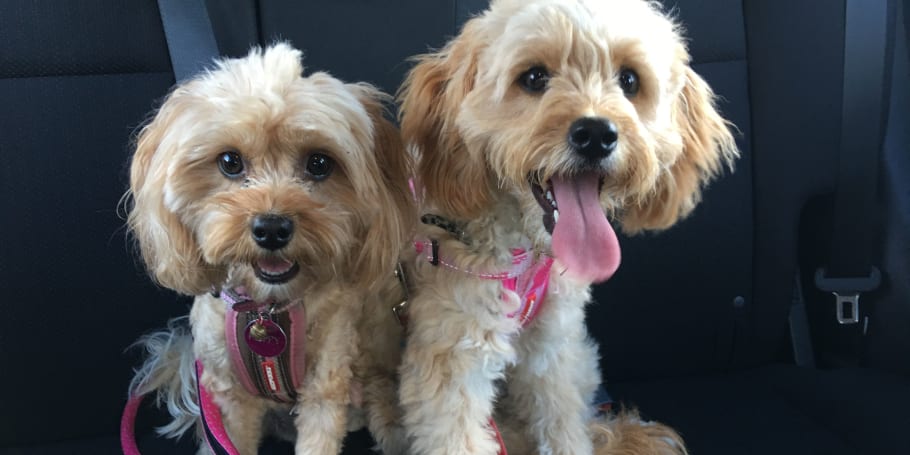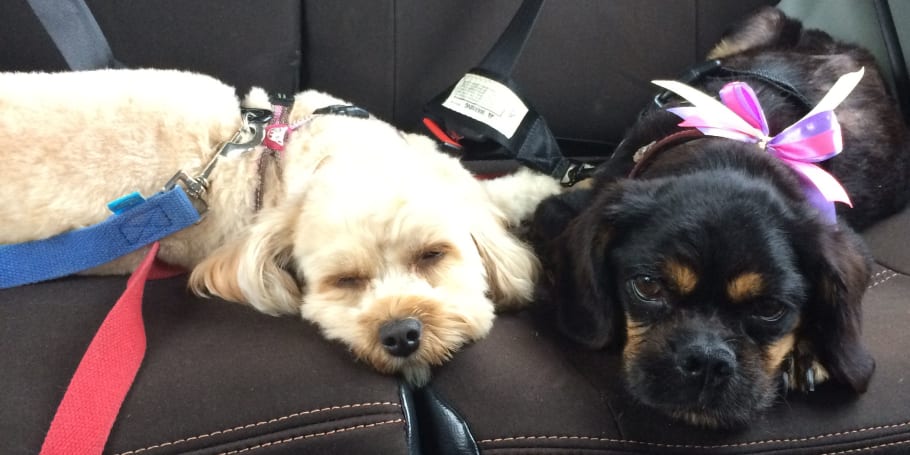
Dog car harness and restraints: the best pet seat belts

People often joke about having furry children, but with more than 40 per cent of Australian households owning a dog, it’s almost inevitable that travelling with a dog as you would a child is a real likelihood.
And just like children, a dog needs to be properly secured inside a car to prevent injury not only to the animal, but its humans, too.
A dog car harness, dog seat belt, dog car restraint or dog car seat belt… it’s essentially all the same thing. A dog car harness comes in different forms and styles, but it should look almost like a vest or deflated life jacket for your puppy.
The dog car restraint should at least offer fitment around the animal’s chest and up around the back, where a length of webbing can then be attached to your car’s seat belt – in effect creating a pet seat belt.
A small dog doesn’t weigh as much, so while harness strength is still important, it’s the fit of the product that is key. Don’t buy a harness that your puppy can grow into, for example, or use a harness sized for a medium dog on your small dog.

What are the differences (if any) between car harnesses, car belts & car restraints for dogs?
Unlike a car seat belt, which has morphed over the years into its particular design, the fact dogs come in so many shapes and sizes – and the lack of a set of standards around dog restraints –means harnesses take many different forms.
The single common element is the fact that a decent harness crosses over the dog’s chest and up over its back. For small dogs and medium dogs, a chest plate with a pair of straps that cross over the back is the norm, while a more encompassing vest-like system is better suited to large dogs and extra large dogs, thanks to their extra weight.
Look for systems that don’t rely on buckles pinched from backpacks, because they’re not strong enough to withstand the deceleration forces in even a minor crash, and no matter the size or age of your pupper, please make sure the system fits as well as possible. You wouldn’t wear a loose seatbelt, so don’t fit one to your pet!
Are there any laws relating to how dogs can be transported in cars? eg. Do they need to be restrained? Can they sit in the front or back seat? What about in the back of a ute? How do these rules vary from state to state?
NSW Roads and Maritime Services (RMS) says a police officer can fine a driver and issue demerit points if "an animal is causing the driver to be not in full control of the vehicle, or if they are driving with a dog on their lap". At the time of writing, it’s a three-point offence that carries a $425 fine.
There’s no rule about a dog riding secured in the front seat, but please be mindful of the fact that airbags deploy with incredible force, and can seriously injure or even kill even a medium size dog if it is struck by an exploding airbag.
Other key rules are that a driver must not drive with an animal in the driver’s lap, and a motorbike rider must not ride with an animal between the handlebars and the rider.
Animals should also be seated or housed in an appropriate area of the vehicle, while dogs on utes are to be restrained either via a tether or cage, so that the dog cannot fall off or be injured when the vehicle moves.
And in the ‘does anyone actually do that’ file, a driver, motorcycle rider, bicycle rider or passenger must not lead an animal (from their machine) while the vehicle is moving.
The Royal Society for the Prevention of Cruelty to Animals (RSPCA) can also issue fines to drivers under The Prevention of Cruelty to Animals Act. If an animal is injured because it was unrestrained, owners face up to six months’ prison and fines of up to $5500.
Carrying dogs untethered on the back of utes can land drivers with $500 fines, too.
While the rules in NSW, Queensland and Western Australia may vary slightly for fine amounts and demerit points deducted, the basic premise is the same; restrain your dog or cop a penalty.

Best Types of dog restraints for Puppies, Small, Medium, Large & Extra Large Dogs? What are the best options if you have multiple dogs?
Not all restraints are created equal, and the old adage ‘you get what you pay for’ certainly applies here. This is especially true if you have a medium dog or a large dog.
Look for harnesses from reputable brands like Purina, Ruffwear or Sleepypod, which have been crash tested and offer features like properly weight-tested buckles, as well as wider webbing and chest plates.
If you have two dogs, there is no such thing as a safe double dog seat belt. Each pooch needs to have a properly fitted dog car harness, and be restrained in its own belt.
If you are in a crash and the dogs are tethered together, their combined mass could mean a restraint failure, while there is a greater risk of injury from the dogs actually colliding with each other.
To sum up, it's a legal requirement - as well as a moral one - to restrain your dog while driving - not just for your own safety but for the safety of your beloved pooch, too.










Comments